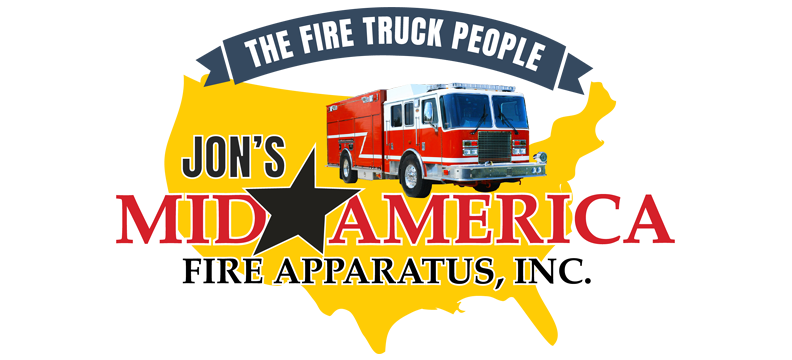In today’s fiscal climate of tight municipal budgets, there is often less money for new fire apparatus. This trend has led many fire departments to turn to multifunctional fire trucks, as opposed to traditional specialty rescue and fire apparatus, in an attempt to cut costs.
For example, a quality rescue pumper generally provides all of the Class A fire suppression capability of a traditional pumper, along with the extrication ability of a rescue, all in a single rig.
But is a multifunctional vehicle the right choice for your department? Here are some crucial considerations to guide your decision when buying fire trucks.
#1: What Are the Needs of Your Community?
There are a number of features that may affect the emergency response needs of the communities you serve, and the apparatus you need to respond to them.
These might include the area’s geography and population size, as well as the types of structures that need protection.
- If you serve an urban area, for example, you might have to contend with crowded downtown streets, tight suburban neighborhood roads, roundabouts, and similar features that require an apparatus with easy maneuverability.
- Sometimes small rural roads aren’t large enough to accommodate multiple apparatus responding to a single call. Compact vehicles with multiple functions on a single rig may be one option for overcoming this limitation.
- Smaller multifunctional pumpers may be perceived as more maneuverable when navigating bridges, overpasses, and trees with overhangs.
- If your community has busy roadways and a high number of car accidents, you may need rescue and medical response capabilities, leading to a greater emphasis on rescue pumpers over traditional pumpers.
#2: How Well Does the Apparatus Accommodate Personnel?
Regardless of whether you specify a traditional pumper or a rescue pumper, your apparatus must be configured with firefighter safety and other personnel needs in mind.
- It takes fewer people to drive a single multifunctional apparatus instead of multiple individual specialty vehicles. For responses that only require limited personnel, a single multitasker may prove more efficient than bringing along multiple individual specialty rigs.
- Compared to a heavy rescue apparatus, a rescue pumper may be easier to drive for personnel in your department who were trained to drive a standard pumper.
- Do you need space for commanding a rescue, or other responses that require a larger team on the scene? A rescue pumper that combines rescue and fire suppression equipment may lack the space for everyone who needs to be there, when compared with a specialized heavy rescue vehicle.
#3: What About Equipment Needs?
The more functionality packed into a single rig, the more challenging it can be to make sure all necessary equipment fits onboard — without compromising the different response roles the rig is intended to serve.
Does the rescue pumper you’re looking at have enough storage space for fire suppression and rescue equipment? Will the water tank, hose, and ladders leave room for enough large air bags and cribbing? Will there need to be medical equipment onboard as well?
All equipment must be stored so that it can be easily and safely deployed and reloaded without interfering with the response effort.
#4: How Will the Apparatus Affect Your Standard Operation Procedures?
What will be the exact role of the multipurpose rig in your department?
Anytime you bring in a new apparatus that differs from what you’ve used in the past, you must consider whether and how it will change your department’s standard operating procedures.
Here are some questions to consider when developing specs and making the purchase decision:
- How would a pumper-rescue fit into day-to-day operations, compared with a traditional pumper or heavy rescue?
- What would be the primary function of the pumper rescue — fire suppression or rescue operations such as extrications?
- Where would the rescue pumper fit into the running order for different types of responses, such as structure fires or car accidents?
- Will the rescue pumper perform the same function and same equipment as other pumpers?
- Does the rescue pumper you’re looking at comply with protocol for mutual aid and mutual assistance?
#5: How Well Does the Apparatus Balance Pumper and Rescue Roles?
If your multipurpose will be called upon for both rescue and pumping roles, how quickly can it convert from one to the other during a response? Can it handle both roles at once if asked to do so?
Putting out a fire and rescuing victims are two different jobs. If your multitask vehicle is only able to perform one of these roles at at time, do you have enough other apparatus to take on the other jobs — safely and efficiently?
While a rescue pumper may be very helpful under some circumstances, a multitask vehicle may be less appropriate for more highly specialized jobs.
#6: What About Your ISO Rating and NFPA Requirements?
If you’re not super well-versed in ISO and NFPA terminology, consult an expert who can walk you through the rules when laying out specs for your next apparatus.
The ISO’s Fire Suppression Rating Schedule (FSRS) calls for a minimum of a three-apparatus response on an initial alarm to a reported structure fire. The ISO requires that two of these apparatus must satisfy criteria for a pumper and the remaining rig must qualify as a ladder or service company.
The apparatus you choose will affect your community’s ISO rating, which helps determine the insurance premiums residents will have to pay.
The NFPA does not have a specification for rescue pumpers because there are too many variations in each individual configuration to arrive at one-size-fits-all standards.
Instead, NFPA 1901 includes requirements for traditional pumpers and what it calls “Special Service Fire Apparatus,” described in Chapter 10 as a multipurpose vehicle “that primarily provides support services at emergency scenes”.
Should you specify your rescue pumper as a special service apparatus or pumper? That depends largely on the unique roles, features, and capabilities that will be included.
Again, use caution and consult with an expert when writing your purchase specifications. What goes into those documents will determine how it is classified for regulatory purposes.
#7: How Will the Apparatus Affect Your Budget?
And last, but certainly not least, there’s the reason so many departments are turning to multitaskers in the first place — the desire to cut costs.
A rescue pumper often does save money up front compared to expensive specialty apparatus that only do one thing at a time. It may allow you to reduce the size of your fleet while maintaining the same response capabilities.
However, some rescue pumpers do cost more than a traditional pumper, depending on the specifications included.
In addition, a multipurpose rig may end up responding to a greater variety and volume of calls, so that wear and tear adds up quicker than on a specialty apparatus. This may raise your costs if you have to buy a replacement sooner than planned. So is it really cheaper if it shortens your replacement schedule?
Not sure if you should go with a specialty or multipurpose?
Contact Jon’s Mid America. We’ll go over the needs of your departments to help you with your fire truck purchase. Choose the right rig to meet your requirements and those of your community.



